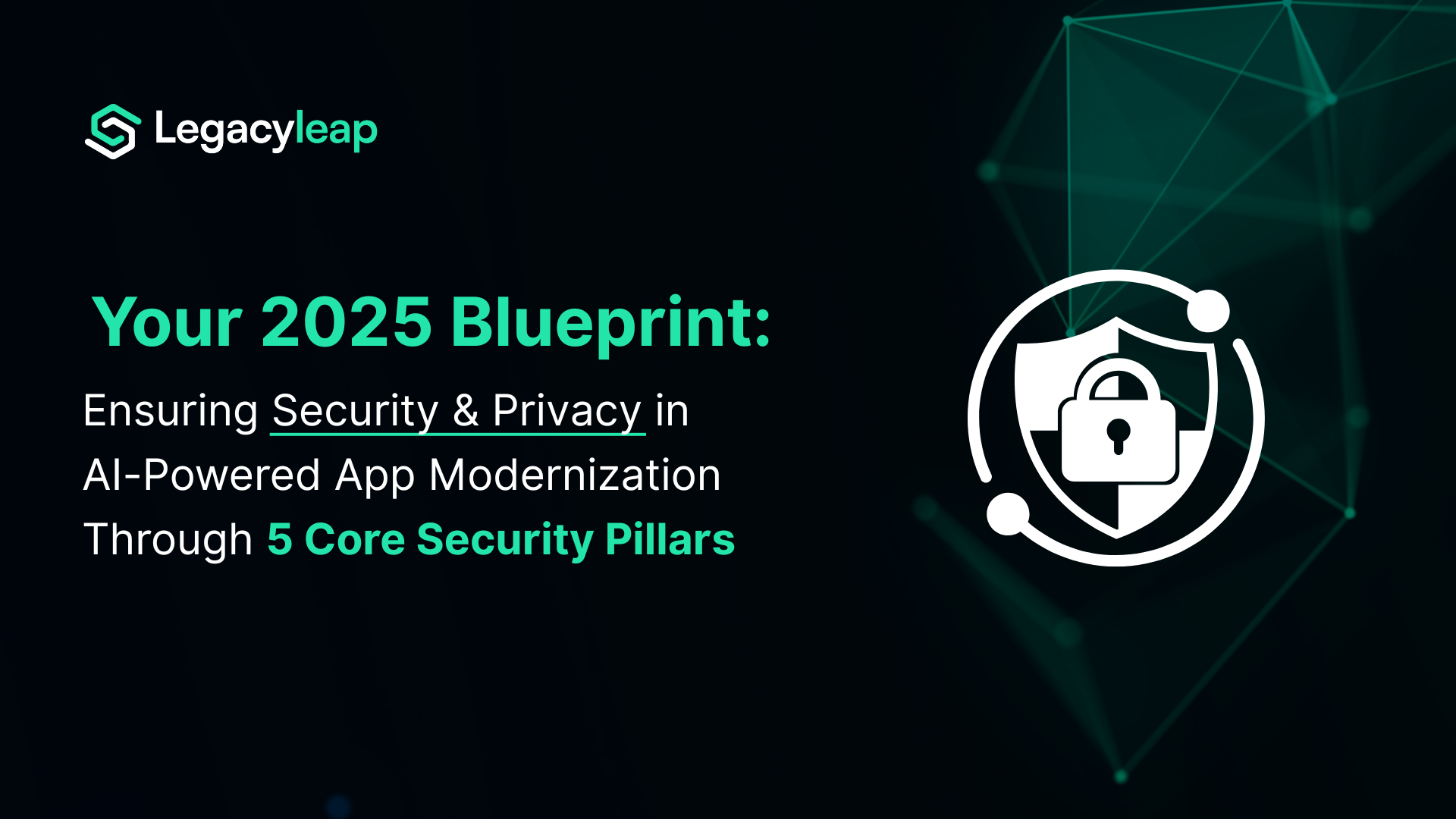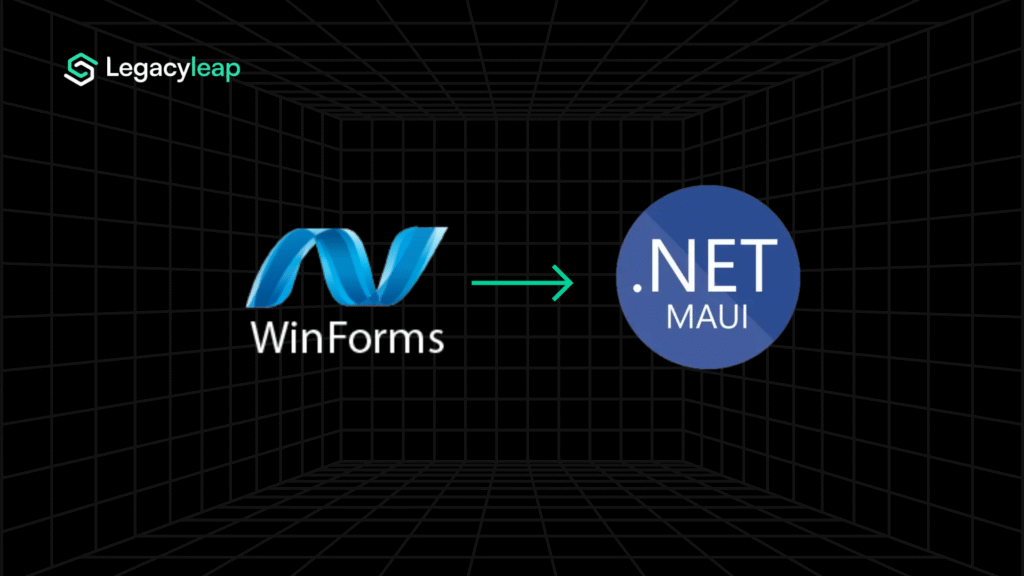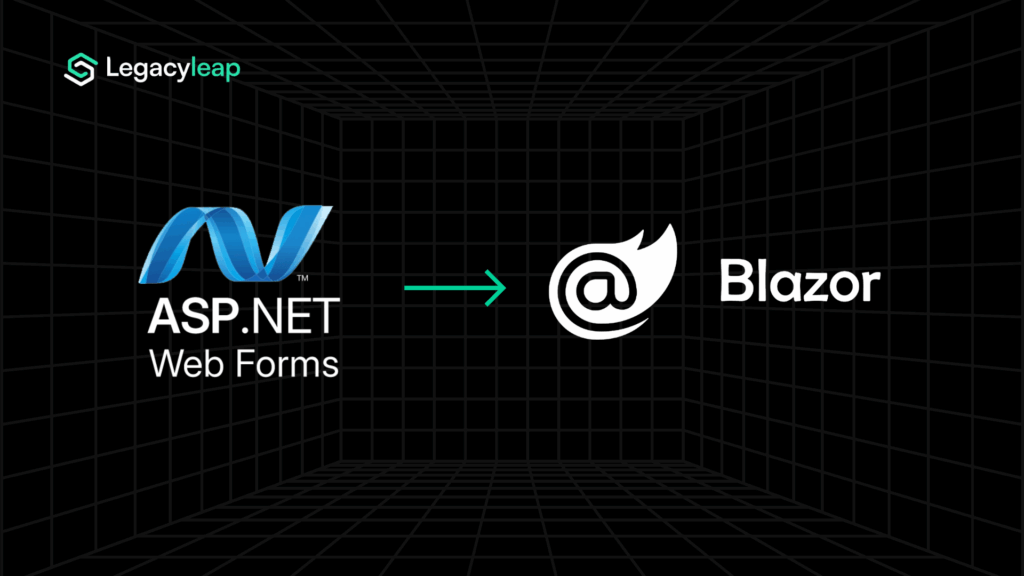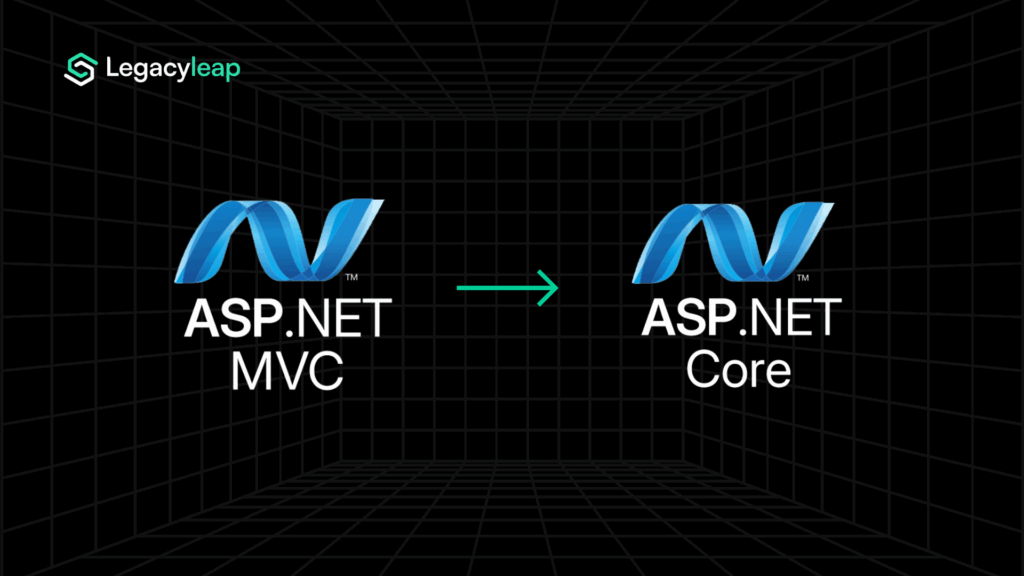Secure AI-driven application modernization is reshaping how enterprises upgrade legacy systems, balancing speed with security. With generative AI and large language models (LLMs) accelerating code migration, refactoring, and optimization, businesses can modernize faster than ever.
But with these advancements come new risks: Governance blind spots, security gaps in AI-generated code, and concerns over compliance and data integrity.
These are not isolated concerns. Across industries, CTOs, CIOs, and technology leaders are asking the same critical questions:
- How do we ensure AI-generated code is secure and compliant?
- What safeguards exist to prevent unauthorized data exposure?
- How do we maintain control over AI-driven decision-making?
We built Legacyleap with these challenges in mind. Instead of treating security as an afterthought, we designed it to address the five fundamental pillars of secure AI-powered modernization:
| Platform Security | Enforcing enterprise-grade security, access controls, and compliance frameworks at the core. |
| Input-Level Guardrails | Preventing security vulnerabilities before they enter the AI pipeline. |
| Model-Level Security | Ensuring transparency, control, and safe AI decision-making. |
| Post-Generation Security | Validating and sanitizing AI-generated outputs for compliance and integrity. |
| Post-Deployment Monitoring & Human Oversight | Enabling continuous risk assessment, governance, and human-in-the-loop validation. |
Each of these areas plays a critical role in making AI-powered modernization secure, explainable, and compliant. In the sections ahead, we’ll break down how Legacyleap delivers on each of these five pillars to ensure modernization that’s both AI-driven and enterprise-secure.
Get Your $0 AI Modernization Assessment Now!
Secure, scalable, and efficient legacy system upgrades await you. Start your journey with no cost today!
1. Platform Security: Building security and compliance into the AI platform from the ground up
Security starts at the platform level, where deployment choices, infrastructure controls, and access management determine the overall resilience of an AI-powered modernization strategy.
At Legacyleap, we’ve built security into the foundation, ensuring enterprises retain complete control over their data while mitigating risks associated with AI utilization.
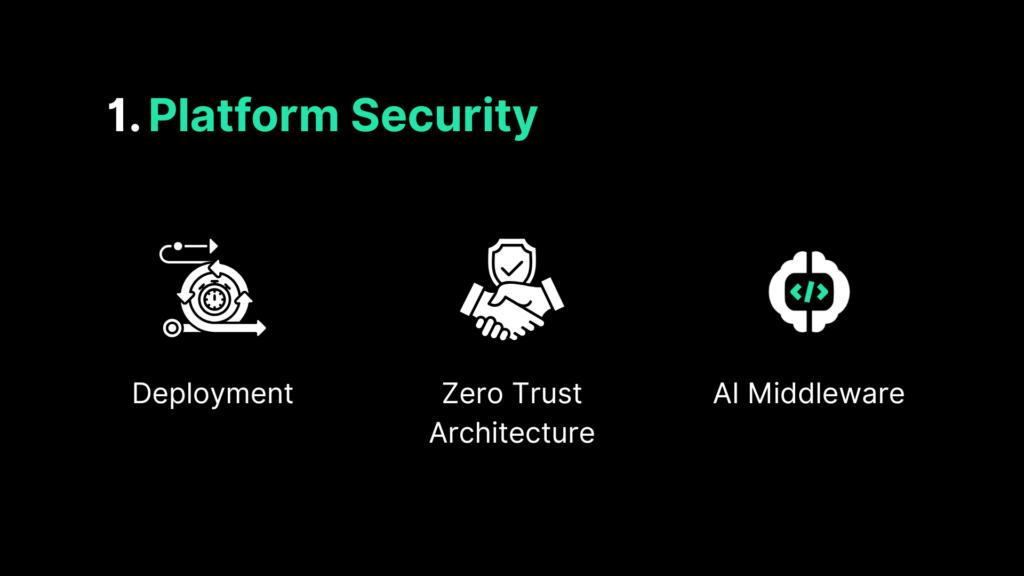
Deployment considerations
Organizations modernizing their applications with AI cannot afford to compromise on deployment security. Legacyleap is designed to be deployed within private enterprise environments, offering three flexible options:
- On-Premise Deployment: Full control over infrastructure, ensuring no external dependencies.
- Private Cloud Deployment (Cloud-Prem): Secure, cloud-hosted environments where data never leaves enterprise control.
- Hybrid Deployment: A controlled mix of on-prem and private cloud setups for organizations requiring flexibility.
Unlike solutions that rely on public AI models with unknown data retention policies, Legacyleap ensures that data remains within enterprise-controlled boundaries, eliminating risks of exposure to third-party providers.
Zero Trust Architecture
Legacyleap adheres to a Zero Trust security model, ensuring every user, system component, and AI agent is authenticated and authorized before access is granted. Our Zero Trust implementation includes:
- Role-Based Access Control (RBAC): Access permissions are defined based on job roles, ensuring that employees, AI agents, and third-party integrations only interact with the data necessary for their function.
- Micro-Segmentation of AI Access: Different components within the AI-powered modernization pipeline (LLMs, middleware, enterprise applications) are isolated to prevent unauthorized cross-system access.
- Continuous Monitoring & Authentication: Every interaction is verified through a combination of multi-factor authentication (MFA), session logging, and real-time anomaly detection.
With these safeguards, Legacyleap ensures that AI modernization initiatives follow the strictest access control policies while keeping sensitive enterprise data shielded from unauthorized exposure.
AI Middleware Security Layer
A core security differentiator in Legacyleap’s approach is its AI middleware, which serves as a protective layer between enterprise infrastructure and AI-powered modernization workflows. The AI middleware performs the following security-critical functions:
- Data Residency Enforcement: No data ever leaves the enterprise’s secure environment. Unlike public AI platforms that might store or reuse input data, Legacyleap ensures all processing happens within a controlled ecosystem.
- Strict Logging of AI Interactions: Every query, response, and system action is recorded, ensuring compliance and traceability.
- Security Checkpoints for AI Processing: Before any AI-generated output is executed, it undergoes security validation, preventing unauthorized changes or biased outputs.
By designing Legacyleap’s AI-powered modernization platform with security-first principles, we ensure that enterprises don’t have to choose between innovation and risk management.
2. Input-Level Guardrails: Stopping security risks at the input stage before they enter the AI pipeline
Ensuring secure AI-driven modernization extends to controlling what goes into the system as well. Without proper input sanitization, AI models can be manipulated, misdirected, or exploited through prompt injections.

At Legacyleap, we’ve built multiple input-level guardrails to safeguard against these risks, ensuring AI-generated transformations remain secure and reliable.
Prompt Security & Sanitization
One of the most common threats to AI systems is prompt injection, where malicious inputs alter an AI’s expected behavior. Similar to SQL injection attacks in traditional databases, unprotected AI models can be tricked into performing unintended actions by cleverly crafted inputs.
Legacyleap mitigates this risk through:
- Parameterized Input Handling: Instead of allowing free-text prompts that could be manipulated, structured input fields ensure that only expected values are processed.
- Prompt Validation & Sanitization: Every user input undergoes a rigorous validation process, filtering out suspicious patterns and escaping potentially dangerous characters before reaching the AI engine.
- Context-Aware Input Restrictions: Inputs are evaluated based on expected behavior models, preventing deviations that could lead to security breaches.
These mechanisms ensure that Legacyleap’s AI-powered modernization workflows remain resilient against input-based threats.
Data Context Segmentation
Not all AI agents should have access to all enterprise data. Without proper segmentation, AI workflows risk unintended data exposure, increasing the attack surface.
Legacyleap enforces strict data access segmentation through:
- Principle of Least Privilege (PoLP): Each AI agent only has access to the minimum required dataset needed for its specific function, ensuring no unnecessary exposure.
- Model Context Protocol (MCP): An additional security layer that dictates what context each AI model can reference, reducing the risk of cross-context data leakage.
- Restricted Input Permissions: AI processes are constrained from fetching data outside their authorized scope, preventing unauthorized access at the input level.
Human-in-the-Loop (HITL) Input Validation
AI security is strong, but it does not beat human validation and oversight. Legacyleap incorporates HITL input validation mechanisms, ensuring that:
- Sensitive data doesn’t accidentally get passed into AI models.
- High-risk prompts undergo manual review or intervention before execution.
- AI-generated modifications align with enterprise security policies before implementation.
By implementing structured input handling, strict data segmentation, and human oversight, Legacyleap eliminates risks before they even reach the AI engine. These input-level guardrails ensure that AI-powered modernization remains secure, controlled, and resistant to manipulation.
3. Model-Level Security: Embedding transparency and control into AI model decision-making
Even with secure inputs and platform safeguards, AI models can still introduce risks at the code execution and response generation level.
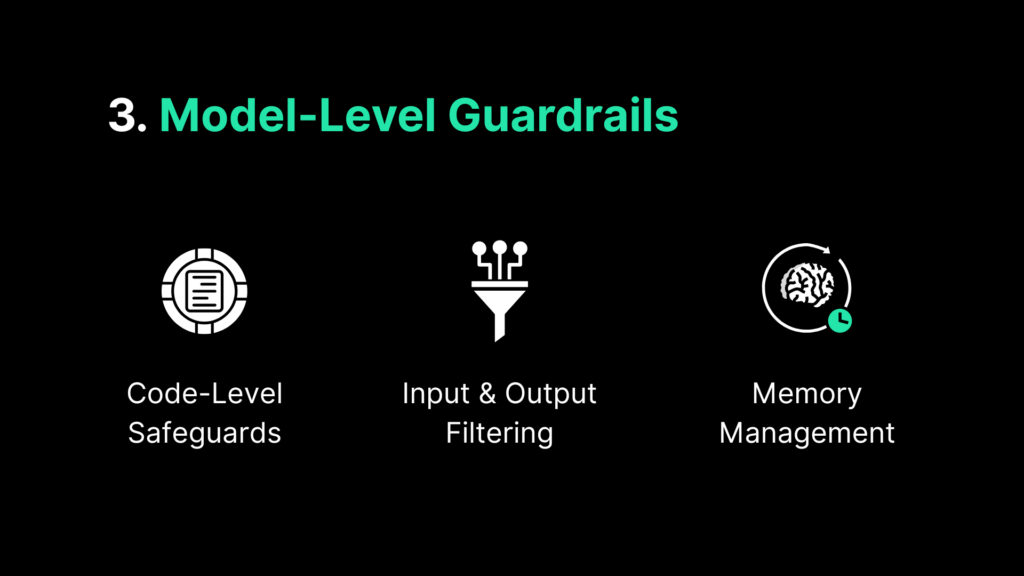
Legacyleap enforces model-level security to ensure that malicious code doesn’t get processed, responses remain reliable, and models don’t unintentionally expose sensitive data.
Code-Level Safeguards
When modernizing legacy applications, AI models interact with code continuously. This opens the door for inadvertent execution of unverified or harmful code. To prevent this, Legacyleap implements:
- Pre-Processing Code Validation: Before any code reaches the AI model, it is scanned for unauthorized or unsafe patterns.
- Execution Filtering: If code is flagged as malicious, redundant, or structurally unsound, it is filtered out before it can impact the transformation pipeline.
- Context Isolation for AI Agents: AI agents are prevented from injecting unauthorized code into execution environments, reducing potential security vulnerabilities.
Input & Output Filtering
AI models don’t always return predictable or accurate results. Without proper filtering, models can generate hallucinated code, misleading suggestions, or unstructured outputs that introduce risks.
Legacyleap’s safeguards include:
- Hallucination Detection & Mitigation: AI-generated responses are cross-checked against trusted architecture patterns to detect anomalies.
- Structured Output Constraints: Rather than allowing free-form responses, models are instructed to generate outputs in predefined formats (e.g., JSON, YAML, XML), ensuring consistent, bounded, and interpretable results.
- Injection & Leakage Prevention: Output filtering ensures that no unexpected or unauthorized data is exposed, maintaining strict adherence to security policies.
By enforcing structure and sanitization, Legacyleap ensures that AI-generated outputs remain reliable, secure, and easily verifiable.
Memory Management
AI models often retain conversational context for improved responses. However, uncontrolled memory retention can lead to unintended data exposure. Legacyleap mitigates this risk by:
- Context Expiry Controls: Restricting how much historical data an AI agent retains, ensuring that older, potentially sensitive information isn’t referenced unnecessarily.
- Session-Based Memory Limits: Enforcing clear session boundaries so that AI-generated insights don’t persist beyond their intended scope.
By limiting AI memory retention, Legacyleap reduces the risk of data exposure across multiple interactions.
With code-level validation, structured output enforcement, and memory restrictions, Legacyleap ensures that AI-powered modernization remains secure at the model level. These safeguards prevent execution vulnerabilities, eliminate hallucinations, and protect enterprise data throughout the transformation process.
4. Post-Generation Security: Validating and securing AI-generated outputs before they reach production
AI-powered code generation doesn’t end with model execution. Without validation, AI-generated code may contain vulnerabilities, structural inconsistencies, or deviations from secure coding practices.
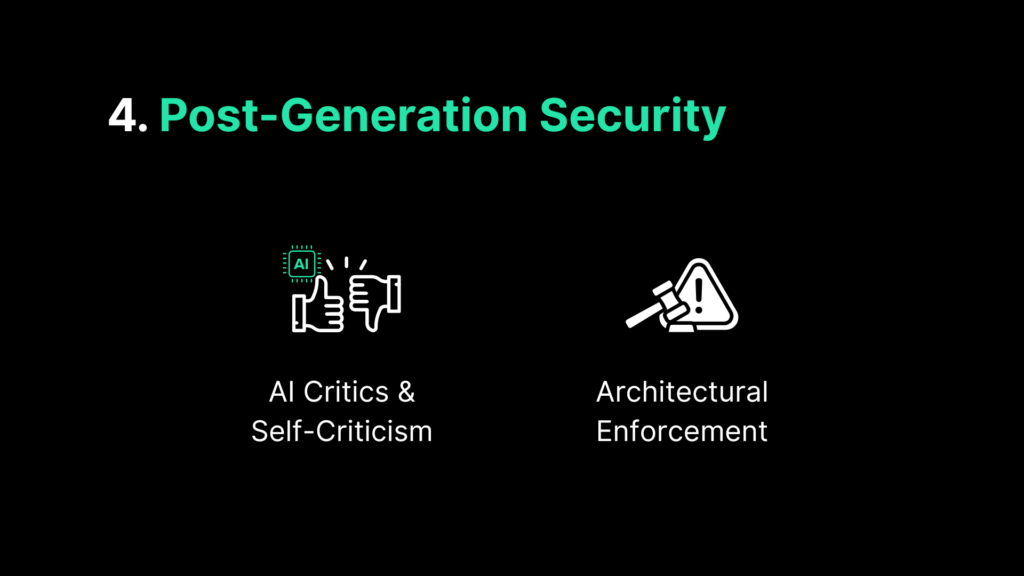
Legacyleap implements post-generation security mechanisms to ensure that every line of code meets enterprise-grade security and compliance standards.
AI Critics & Self-Criticism: Multi-Model Code Evaluation
To guarantee code quality, Legacyleap employs a dual-layer review process:
1. AI Critics (External Review Models):
- A separate LLM, distinct from the primary AI model, is used to evaluate code quality, security adherence, and best practices.
- Example: If Llama generates the code, a model like DeepSeek can critique it against predefined security policies.
2. Self-Criticism (Agentic Evaluation):
- Within an agentic AI framework, a dedicated AI agent plays the role of a self-reviewer, analyzing the code for security risks before human intervention.
- This is similar to an engineer performing a self-check before submitting work for peer review.
By leveraging multi-model validation, Legacyleap prevents security flaws from slipping through AI-generated outputs.
Secure Coding Practices & Architectural Enforcement
To prevent AI from generating unstructured or insecure code, Legacyleap enforces predefined security and architecture guidelines before code is even generated:
- Predefined Architectural Templates: AI models follow structured templates rather than generating freeform, unbounded responses.
- Security Best Practices: AI-generated code adheres to industry security frameworks, including OWASP Top 10 (Web security vulnerabilities) and SEI CERT Guidelines (Secure coding standards).
- Strict Role Boundaries for AI Models: AI models are restricted to specific coding tasks, preventing unintended behaviors or deviations from security policies.
By enforcing architectural and security constraints, Legacyleap guarantees that AI-driven development remains structured, secure, and predictable.
5. Post-Deployment Monitoring & Human Oversight
Even after AI-generated code is deployed, continuous oversight and safeguards are essential to ensure security, compliance, and traceability. Legacyleap enforces explainability, execution sandboxing, and human approval to prevent unintended risks.
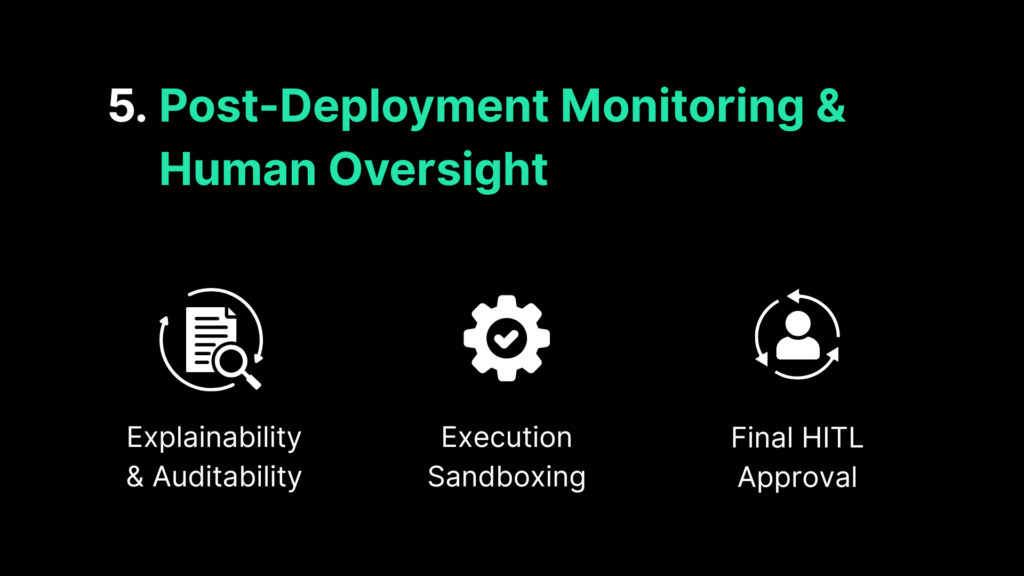
Explainability & Auditability
Legacyleap ensures full visibility into AI-driven decisions by:
- Maintaining Logs & Rationale Tracking: Every AI-generated output is logged with traceability metadata to understand how and why a decision was made. This enables post-mortem analysis and AI behavior audits when needed.
- Audit-Ready AI Outputs: AI-generated code must be explainable and reproducible, ensuring compliance with enterprise security policies. With full traceability, organizations can review AI-generated outputs, identify anomalies, and ensure compliance at all times.
Execution Sandboxing
Before AI-generated code is executed in a live environment, Legacyleap runs it within a restricted sandbox:
- Isolated Testing Environment: AI-generated code is first deployed in a disconnected execution sandbox to catch security issues before production. This ensures that malicious or unstable code never reaches critical systems.
- Pre-Deployment Security Validation: The sandbox environment flags vulnerabilities before they can impact production.
Final Human-in-the-Loop (HITL) Approval
AI doesn’t operate in isolation. Human oversight remains a critical layer of Legacyleap’s defense:
No AI-generated code is executed without human approval. Engineers validate the security, compliance, and correctness of AI-generated outputs.
AI speeds up development, but the final sign-off stays with human experts, ensuring control and accountability.
By combining AI-driven automation with human oversight, Legacyleap ensures that enterprise AI adoption remains secure, auditable, and accountable.
AI-Powered Modernization, Secured at Every Layer
AI-driven app modernization cannot compromise security, and with Legacyleap, it never does. Our multi-layered security approach ensures that every stage, from model input to post-deployment monitoring, is built with explainability, privacy, and risk mitigation in mind.
We promise to not just modernize legacy applications but to de-risk AI adoption by embedding structured safeguards, controlled execution, and human oversight into every step. With Legacyleap, enterprises get the efficiency of AI without uncertainty, ensuring safe, reliable, and fully accountable AI-driven modernization.
Find out how secure, efficient, and scalable your modernization journey can be with a risk-free $0 AI-powered assessment tailored to your legacy application.


